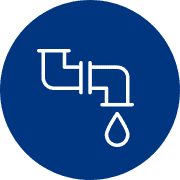What Is Low Flow Plumbing: Water Efficiency Advice from Expert Plumbers

I don’t think I’m alone in saying that misconceptions taking hold like this happens a lot to all kinds of different people. I know I certainly see it happening in my line of work as a plumbing professional. Lately, in fact, I’ve been starting to talk to a lot of people who seem to all have the exact same question: what is low flow plumbing? These folks, who live all over our area from Sacramento down to Vacaville, seem to have heard a lot about it, but they just never have come right out and asked an expert exactly what low flow plumbing actually is.
So, that’s what I’d like to talk about here today: what is low flow plumbing, and why does it benefit homeowners to know all about it? Even if you already know or have never been curious, I’d urge you to stick with us. Knowing the details about low flow plumbing and how to take advantage of new low flow plumbing technology will ultimately bolster your home’s water efficiency—and save you money on your water bill.
What Is Low Flow Plumbing?
Simply put, low flow plumbing is a way for homeowners to decrease the flow of water in their faucets, aerators, toilets, and showerheads without necessarily decreasing the actual pressure of the water. With that in mind, homeowners may have already guessed what the central benefit of this is: you will inherently find yourself using less water on a month-to-month basis than you did before.
It’s pretty simple logic, really. If there’s less water coming out of your plumbing system, then it will ultimately cost you less to pay off your monthly water bill.
It’s pretty simple logic, really. If there’s less water coming out of your plumbing system, then it will ultimately cost you less to pay off your monthly water bill. You will, of course, also be helping out with the Northern California drought. That’s really nice, obviously, but, hey, if you can save some money for yourself at the same time, why not embrace that too?
How to Use Low Flow Plumbing Fixtures at Home
What generally happens after I tell folks about low flow plumbing is that they then want to know how they can use it in their homes. That’s a subject I’m always ready and excited to discuss. There are so many kinds of great low flow plumbing equipment choices, including special types of fixtures for your faucets, toilets, and showerheads.
One thing that I recommend anyone who is interested in this do is to call a local plumbing professional right away. Anyone who is well-versed on plumbing repair will also be able to give you all the info that you might need to decide if embracing low flow plumbing is a good move for your home. They can also help you take advantage of any potential Northern California plumbing rebate programs that can save you money on the purchase and installation costs associated with this decision.
What If I Have Some Concerns About Low Flow Plumbing?
The third and final question that almost always finds its way into a discussion about low flow plumbing is: what’s the catch? People naturally just don’t believe it when you say there’s a great new way for them to save some money every month. It’s most common for folks to worry that embracing low flow plumbing in order to bolster their home’s water efficiency will lead to showers with really weak water pressure.
…there are also new shower heads that use new technology that pushes water out with vacuum force, even when it’s low flow.
The low pressure question is definitely one that a trained plumber can help you address. Showerheads are the thing most commonly asked about, and, yes, low flow plumbing can reduce your pressure. However, there are also new shower heads that use new technology that pushes water out with vacuum force, even when it’s low flow. Make sure to ask a plumber about that. As far as toilets and sinks? Well, the chances are that you won’t even notice the low flow plumbing difference in those areas.
I personally use a number of low flow plumbing fixtures in my own home, from the toilet to the showerheads to the sinks, and I really like both saving money every month on my water bill—as well as feeling like I’m doing my part to be as efficient with my home’s water as possible. I’ve been using these things for so long that I can’t even remember if I noticed a difference right after I made the switch.
I would, of course, be more than happy to help you answer this question and any others that you might have about how to make your home more water efficient. Here at Bell Brothers, we have the expertise and the experience you need to ensure you’re making the best possible decision at all times. Give us a call today!
At Bell Brothers, our trained plumbing professionals would be happy to answer the question of what is low flow plumbing, as well as any other questions you may have about the water efficiency situation in your home. Contact us today to schedule a free in-home consultation.
Image courtesy KarlyukAV


